ホーム → 文法 → DoJG main menu → 基本 → Basic Page 473
Particle
| A particle which lists things exhaustively. | And |
| 【Related Expression: に (and); と2; や】 |
(ks). マイクとディック(と)は学生だ・です。
Mike and Dick are students.
(a). 私は英語と日本語を話す。
I speak English and Japanese.
(b). ミルズさんは来年ドイツとフランスとスペインへ行くつもりだ。
Mr. Mills is planning to go to Germany, France and Spain next year.
(c). ステーキはナイフとフォークで食べる。
We eat steak with a knife and fork.
(d). 山本さんとスミスさんがテニスをしている。
Mr. Yamamoto and Mr. Smith are playing tennis.
(e). 日本語とトルコ語は似ている。
Japanese and Turkish are alike.
1. と is used to list things exhaustively. The final と is usually omitted, but the others are not. Thus, "A, B, C and D" is usually expressed as "AとBとCとD."
2. と connects noun phrases only. Thus, it cannot be used for 'and' in sentences, as seen in (1) - (3).
(⇨ て)
3. "Noun1とNoun2(とNoun3...)" is a noun phrase; it can occur anywhere nouns can occur.
4. When Noun1とNoun2 is used as the subject of a sentence, the sentence may be ambiguous. In Example (d), for example, without adequate context we cannot tell if Mr. Yamamoto and Mr. Smith are playing tennis together. If the predicate contains reciprocal words such as 似る 'resemble', 同じだ 'be the same' and 結婚する 'marry', however, sentences with "Noun1とNoun2" in subject position are not ambiguous, as seen in Example (e).
【Related Expressions】
I. When Example (d) means 'Mr. Yamamoto and Mr. Smith are playing tennis together' it can be restated using と2 'with', as in [1].
[1]
Note that if the speaker states [1a] or [1b] instead of Example (d), he is speaking from Mr. Yamamoto's or Mr, Smith's viewpoint, respectively.
II. や is also used to list things, but that listing is inexhaustive. Examples:
[2]
III. The particle に can be used to combine two or more objects that usually come as a set.
[3]
The difference between に and と is that に always implies that one or more than one object has been added to the first object as an indispensable member of the entire set. と, however, does not necessarily carry that implication.